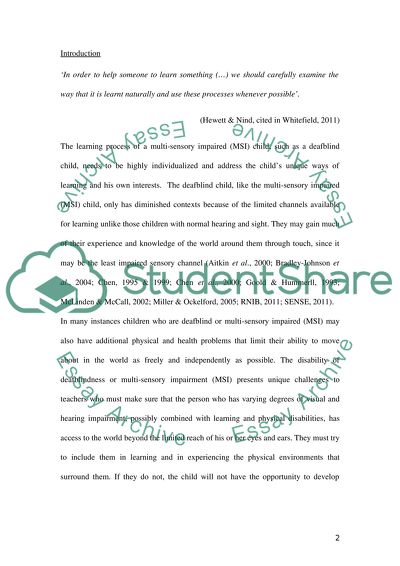Cite this document
(“Learning through touch - why children who are deafblind or Essay”, n.d.)
Retrieved from https://studentshare.org/education/1578775-learning-through-touch-why-children-who-are-deafblind-or-multi-sensory-impaired-msi-are-more-reliant-on-touch-or-their-tactile-senses-to-experience-the-world
Retrieved from https://studentshare.org/education/1578775-learning-through-touch-why-children-who-are-deafblind-or-multi-sensory-impaired-msi-are-more-reliant-on-touch-or-their-tactile-senses-to-experience-the-world
(Learning through Touch - Why Children Who Are Deafblind or Essay)
https://studentshare.org/education/1578775-learning-through-touch-why-children-who-are-deafblind-or-multi-sensory-impaired-msi-are-more-reliant-on-touch-or-their-tactile-senses-to-experience-the-world.
https://studentshare.org/education/1578775-learning-through-touch-why-children-who-are-deafblind-or-multi-sensory-impaired-msi-are-more-reliant-on-touch-or-their-tactile-senses-to-experience-the-world.
“Learning through Touch - Why Children Who Are Deafblind or Essay”, n.d. https://studentshare.org/education/1578775-learning-through-touch-why-children-who-are-deafblind-or-multi-sensory-impaired-msi-are-more-reliant-on-touch-or-their-tactile-senses-to-experience-the-world.


